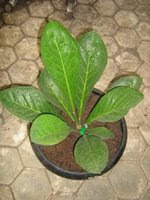
ANTHURIUM BINTANG KEJORA, BLACK BEAUTY, BLACK SILVIT, BURGUNDY, ENTONG, COBRA, COMPACTA, CORONG, GELOMBANG CINTA, GOLDEN, GOLOK, HOKERY, JAIPONG, JENMANII, KERIS, KING COBRA, KUKU BIMA, LEMON, MANGKOK, NAGA, PAGODA, PHYTON, PLUTO, SARANG BURUNG, SAWI, SIRIH, SUPER RED, SWEETA, TANDUK, VARIGATA
Harga antara 1 juta - 150 juta
segera pesan sebelum diambil orang...!!!
Harga antara 1 juta - 150 juta
segera pesan sebelum diambil orang...!!!

